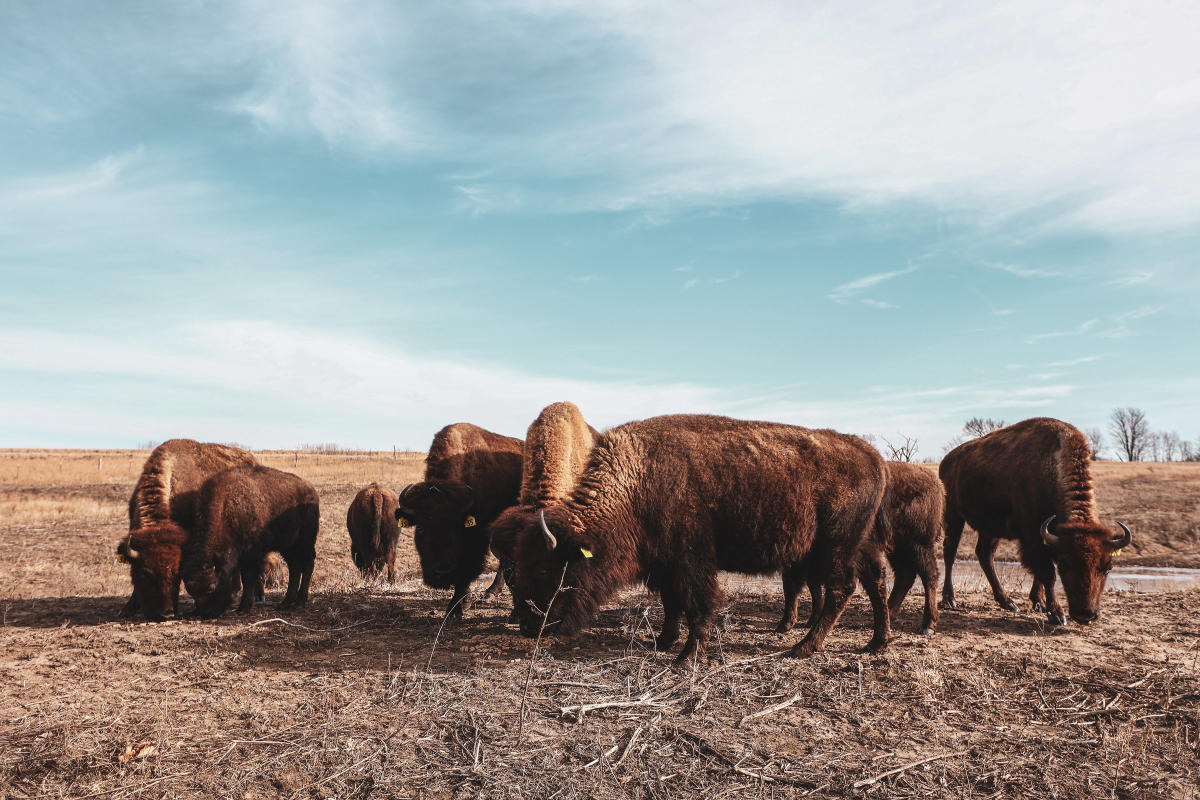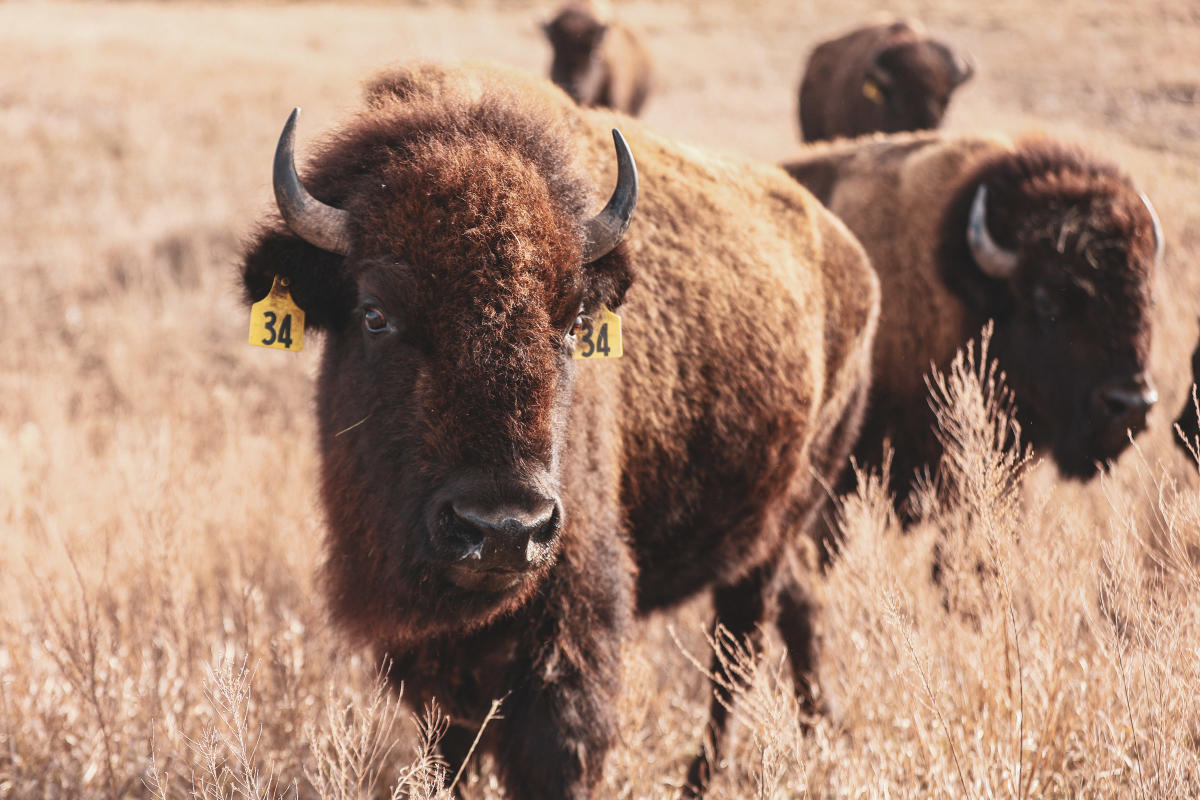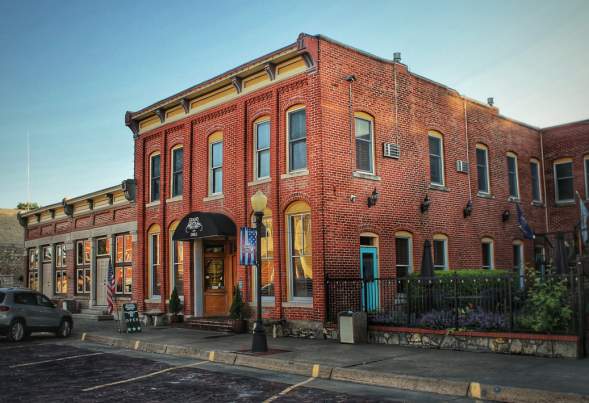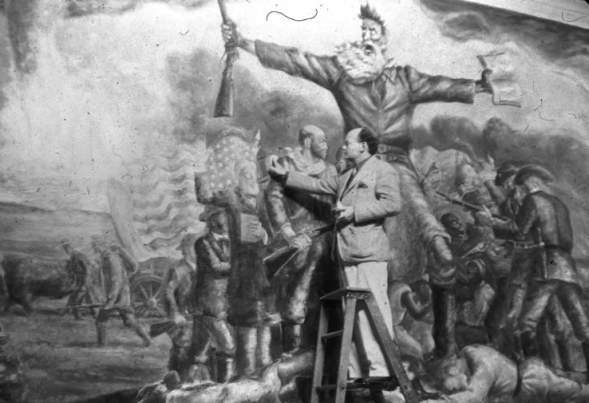 Photography by Ryan Coody (ᏣᎳᎩ ᎠᏰᎵ/Cherokee Nation of Oklahoma)
Photography by Ryan Coody (ᏣᎳᎩ ᎠᏰᎵ/Cherokee Nation of Oklahoma)
The Kickapoo Tribe in Kansas works to care for and grow its herd of bison as a practical and symbolic bridge between its past and future
We’re in a four-seat utility vehicle, bouncing over the packed soil and tufts of grass on the land of the Kiikaapoi, recognized in Kansas as the sovereign territory of the Kansas Kickapoo Tribe in the northeast section of the state near Horton. In particular, we are riding across the home fields of the 12 bison in the Kickapoo herd, who start moving toward us when they recognize the vehicle and the familiar movements of Jason Whitewater, the tribe’s farm and ranch manager, as he scatters food pellets across the ground.
Whitewater has been working with these bison since their arrival in May 2020. At that time, there were five pregnant heifers and one bull.
“In our language, there is no word ‘buffalo’ or ‘bison,’” explains Lester Randall, chairman of the Kickapoo Tribe of Kansas. “We have always known them as ‘Miisiikwaaha,’ and they have always been symbolic to our tribe. We have always believed they have a spiritual and healing power. We have used them for not just food, but for clothes and so many other things. These animals were almost extinct at one time, and a lot of Native tribes believe that we are close to them because we have been through a similar experience.”
The bison came to the tribe from a ranch in the Flint Hills. Randall says the tribe chose this particular group of bison for their calm temperament and ability to adapt to a new land and to proximity to people.

“Before they arrived, our tribe had a cow herd,” Randall says, “but bison are entirely different. We wanted to start small and with this group so that we could learn as we grew the herd.”
One of the key differences between bison and cattle, Randall notes, is how quickly the herd can move and how connected they seem to the land.
“I can’t believe how agile they are,” Randall says. “They can just run and run and then stop and turn on a dime. And when there is a thunderstorm, they gather in a herd until the thunder hits, and then it is like someone threw a firecracker into them as they all split off into different directions, prancing around like deer. They love the rain.”
Other tribes in Kansas, such as the Prairie Band Potawatomi (mshkoteni bodwewadmi) and the Sac and Fox of Missouri and Kansas (Ne ma ha ha ki), maintain herds of bison through the Intertribal Buffalo Council, a group of 69 tribes that collectively manages and cares for more than 20,000 bison as part of a mission to restore the animals to Indian land.
The Kickapoo don’t formally belong to this organization, but they often consult with the program and other experts from tribes within it. The Kickapoo share the council’s goal of reestablishing buffalo herds on Indian lands in a manner that promotes cultural enhancement, spiritual revitalization, ecological restoration, and economic development.

Part of caring for the bison involves providing them the appropriate land. The Kickapoo keep their herd on an area that is rich in native grasses and free from pesticide. They also recently completed building a second pond for the herd that opens up an additional 50 acres for the bison to roam.
Eventually, the plan is to have a herd of 25 to 35 bison. For now, the smaller herd is thriving, with five calves born over the past two years. As they assemble around the feeding area, one of the bison places herself between us and her herd, as if to stand guard.
Whitewater and Randall identify her as Bison #34, named for her tag number. She isn’t the largest bison in the group, but she is unquestionably the leader and protector.
“If a coyote or even a turkey shows up on their field, she will race over and chase them away from the herd,” Randall says. “She is the boss. Where she goes, the herd follows.”
Whitewater says he makes sure to keep an eye on Bison #34 and does what is needed to keep her content so that the rest of the herd follows suit.

Working with this herd daily allows Whitewater and Randall to notice different personalities and traits of individual bison. But the bison are most significant in what they collectively represent, a return of the Miisiikwaaha. Randall says the presence of the herd has brought some hope and peace to the tribe during the pandemic, with some members coming to visit the bison or to take advantage of other benefits such as using their hair for crafting or collecting manure for fertilizer.
“I see people just stopping all the time to look at the bison. Visitors will stop as they drive by, and tribal members will often get out and talk to the bison. The sense of hope they have brought to us is amazing.”
Ways to Stay Connected
More Articles You'll Enjoy
Black History Trail of Geary County
Mar 08, 2024Jim Sands, President of the Black History Trail of Geary County / Photography by Nick Krug A county… Read More
Quindaro: A Great, Nearly Lost City of Free Peoples
Mar 07, 2024Photography by Andrea LaRayne Etzel & Carter Gaskins Quindaro was an abolitionist frontier city… Read More
Historic Hotels in Kansas
Feb 02, 2024Grand old lodgings in Kansas offer peek into the past Historic hotels offer more than a good… Read More
From the Archives: Remembering John Steuart Curry
Jan 15, 2024Editor's Note: This article was originally published in the winter of 1992 by Don Lambert… Read More
From the Archives: Birth of the Helicopter
Jan 08, 2024Editor’s Note This article was originally featured in the winter issue of 1983 by Joan L… Read More









